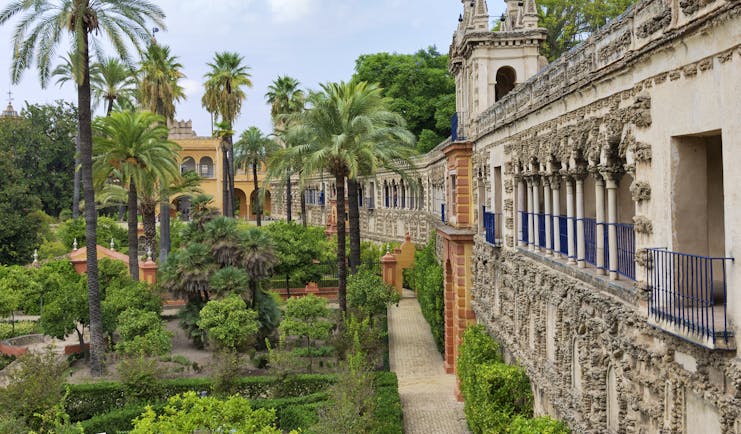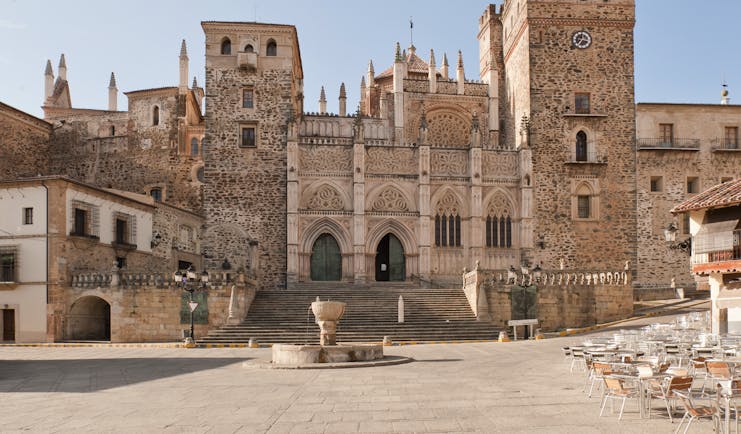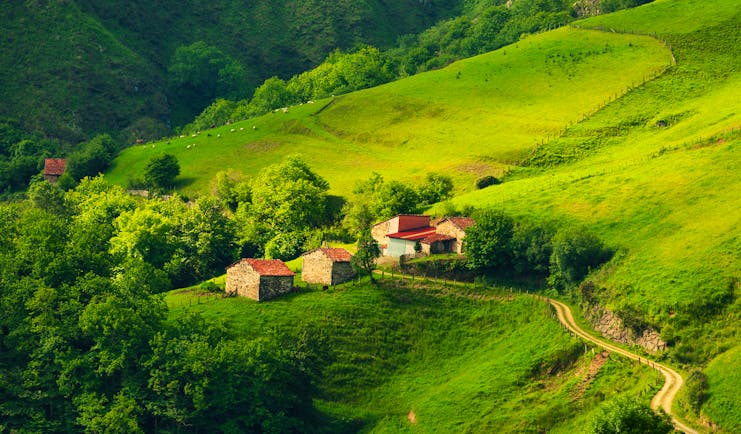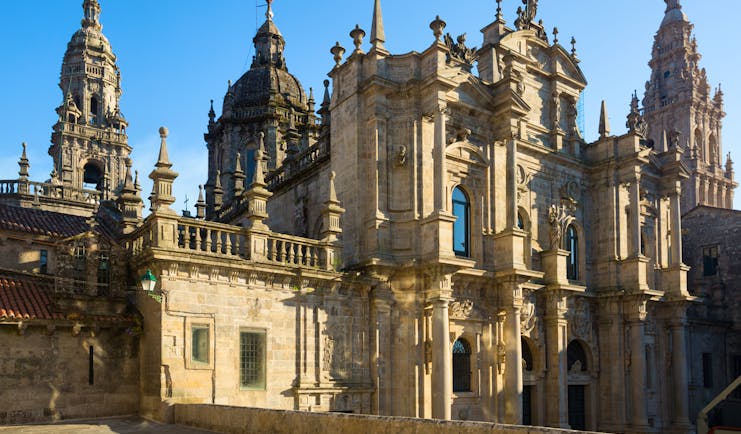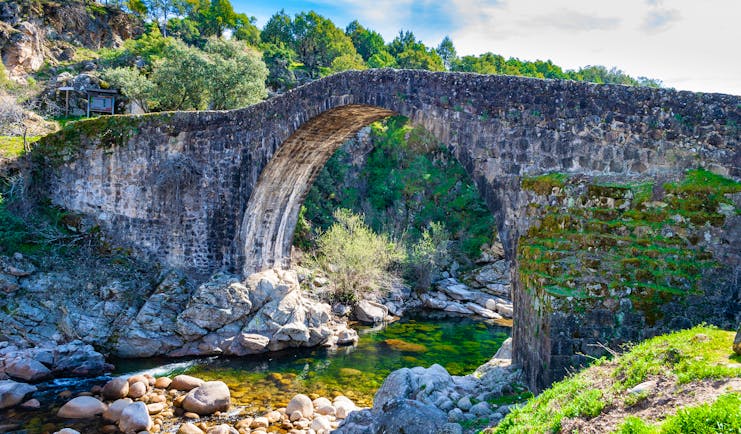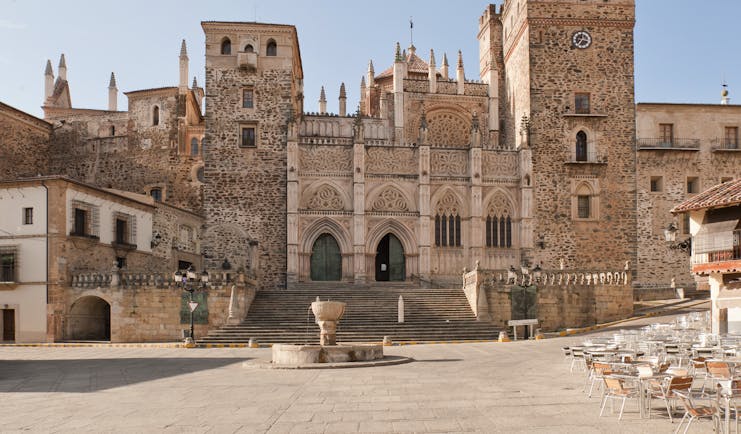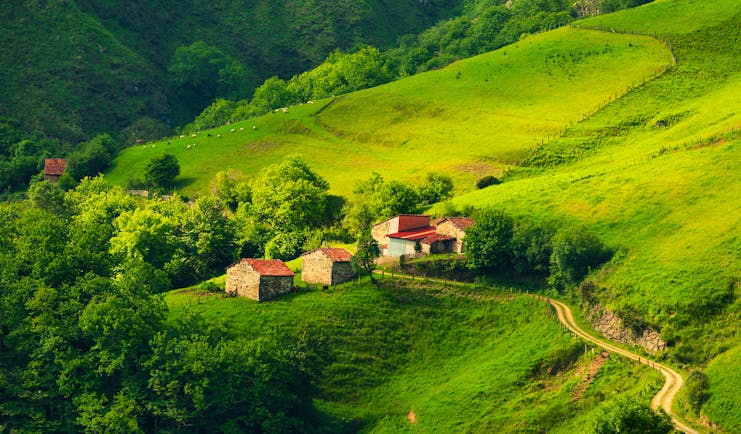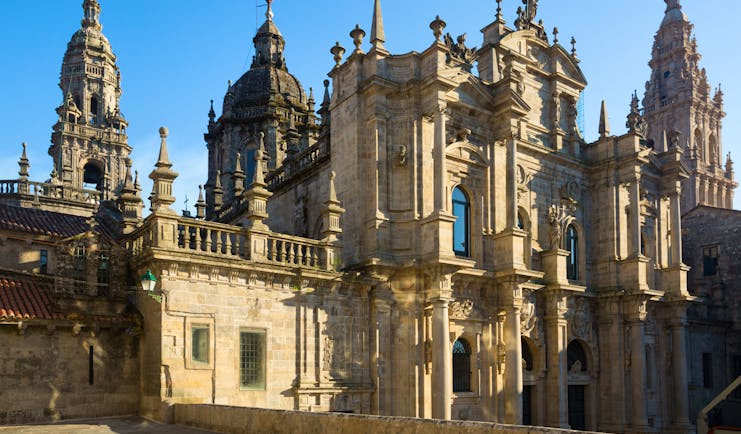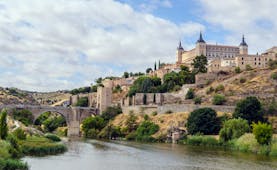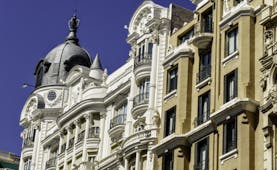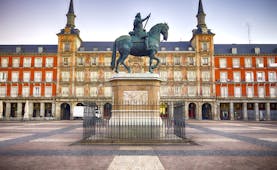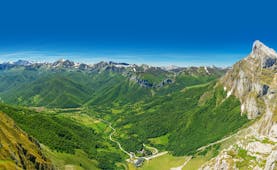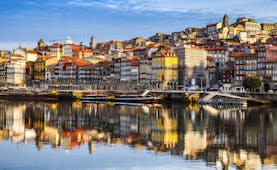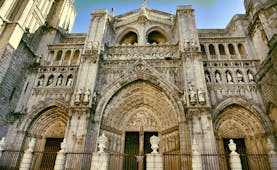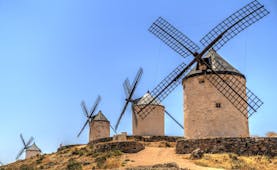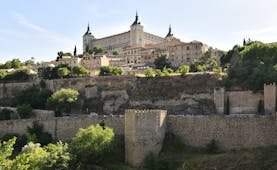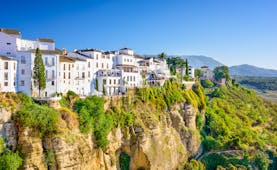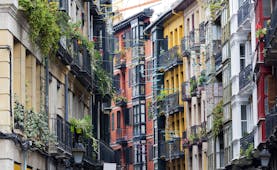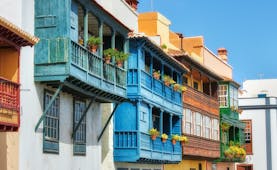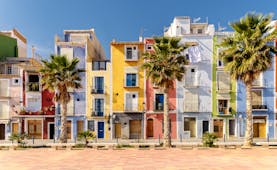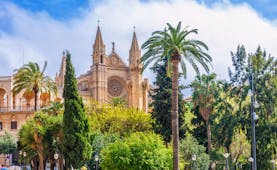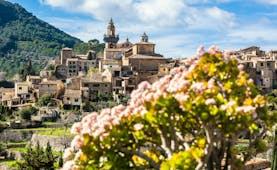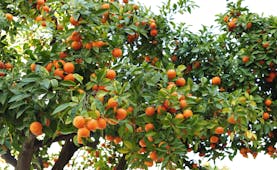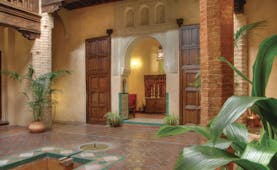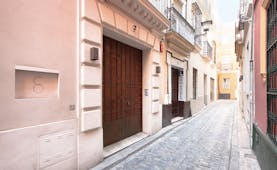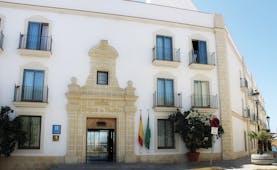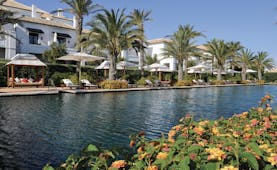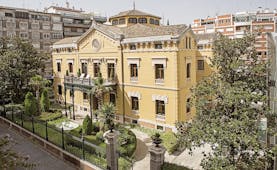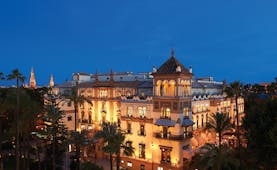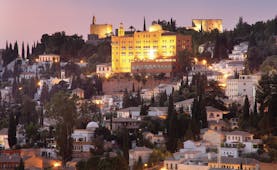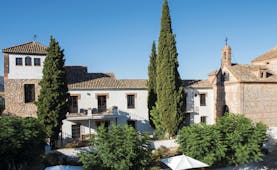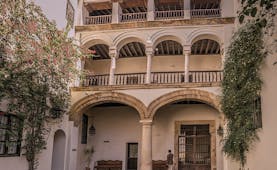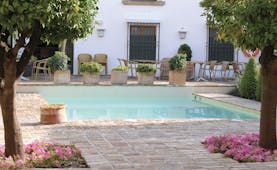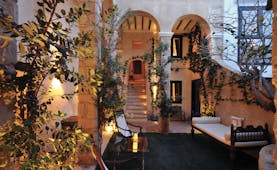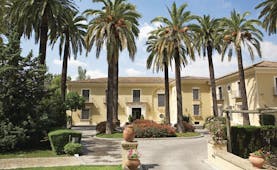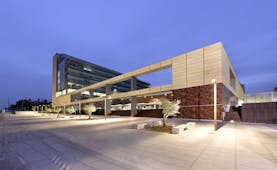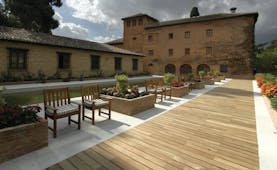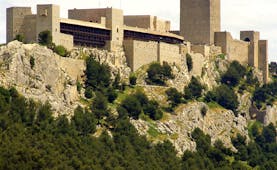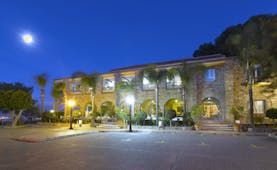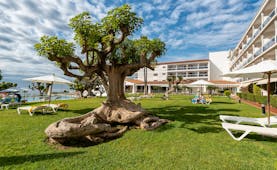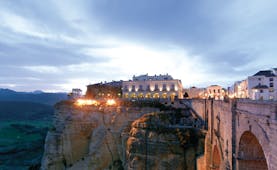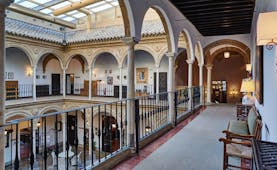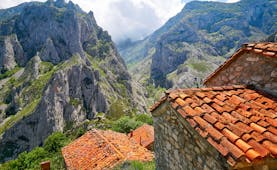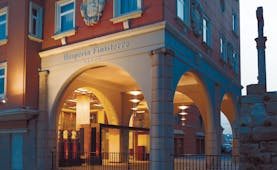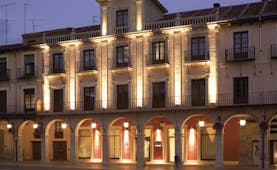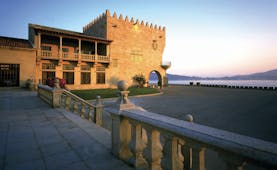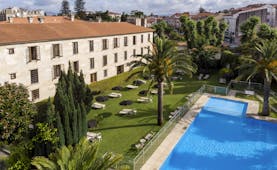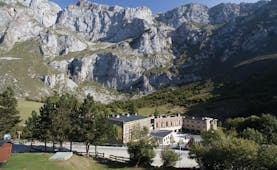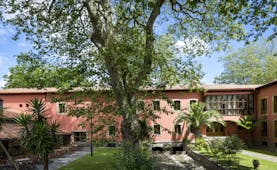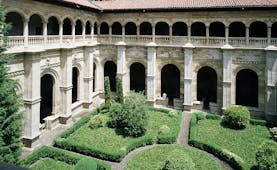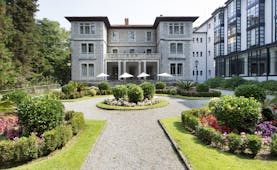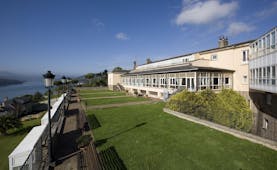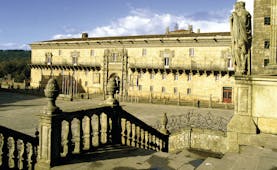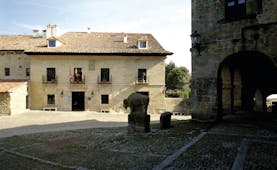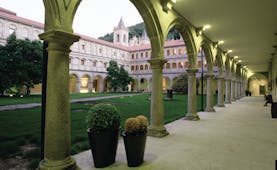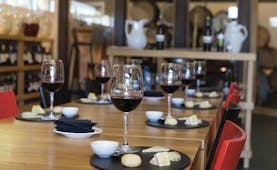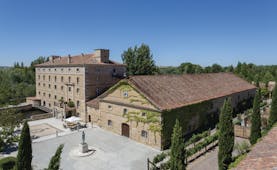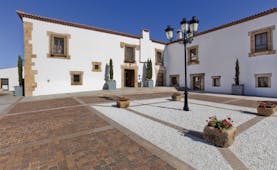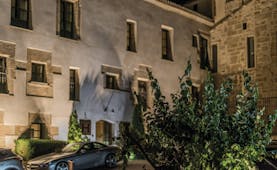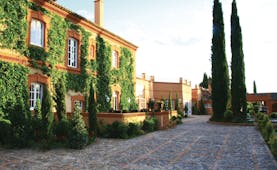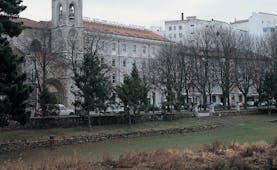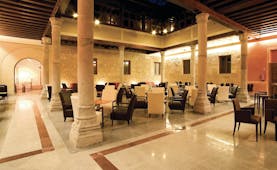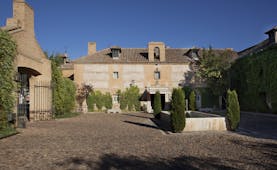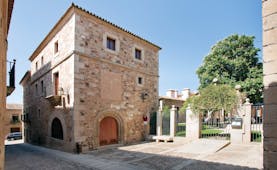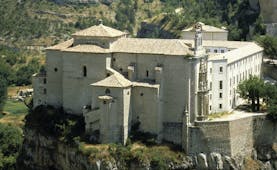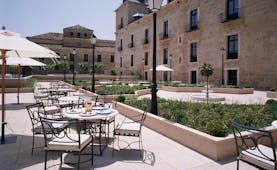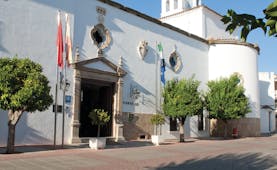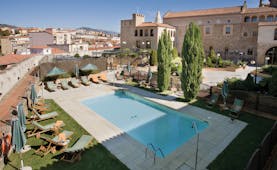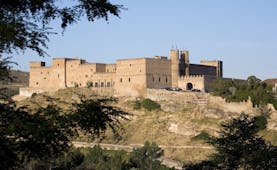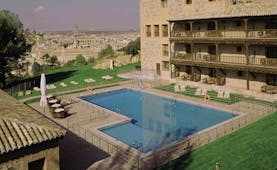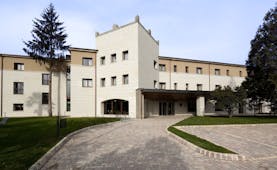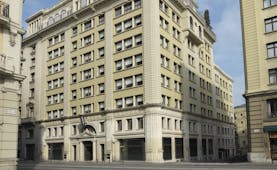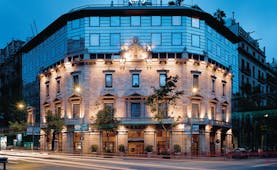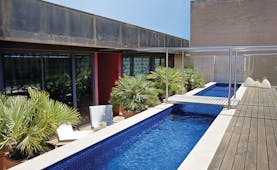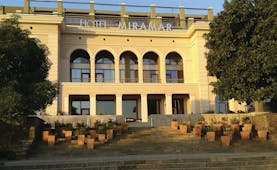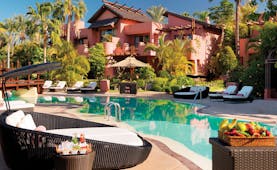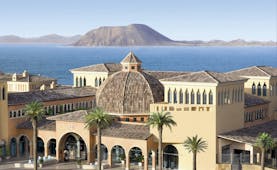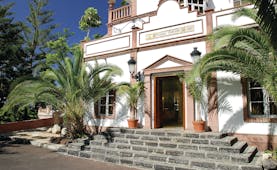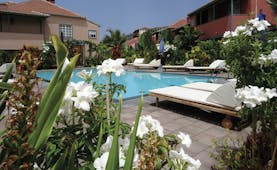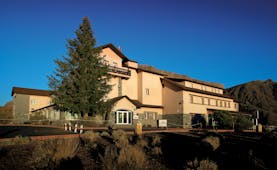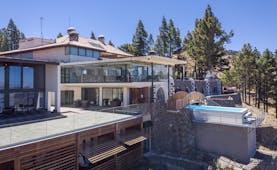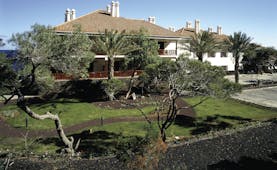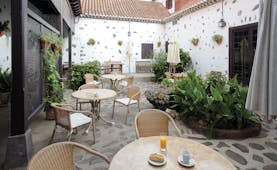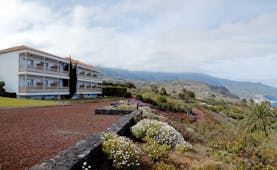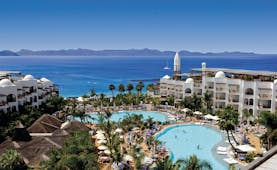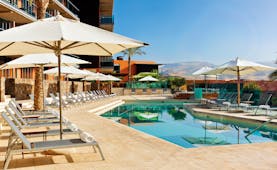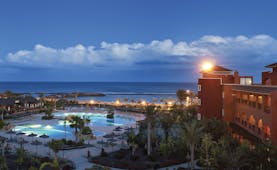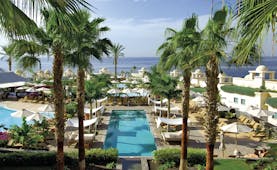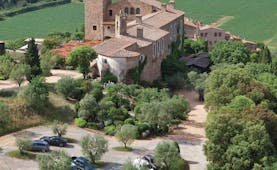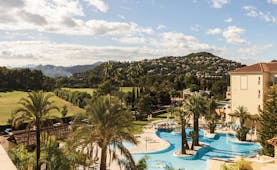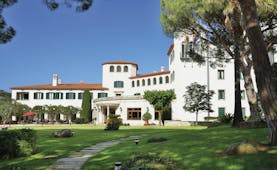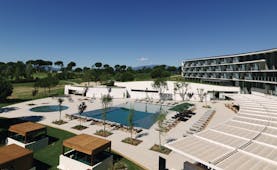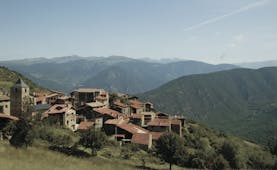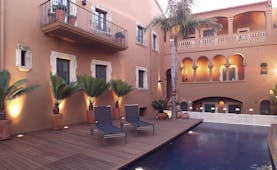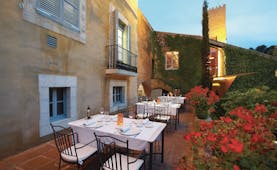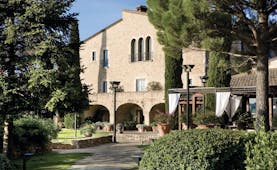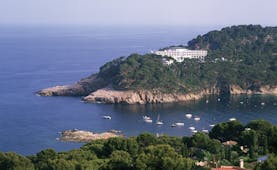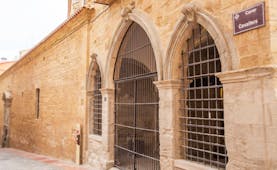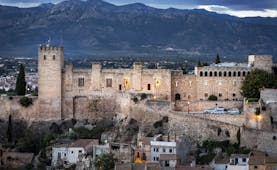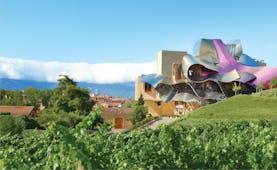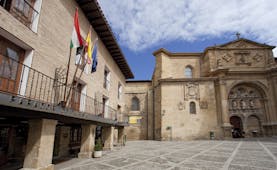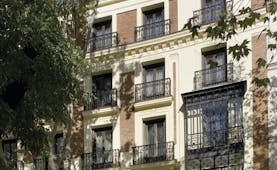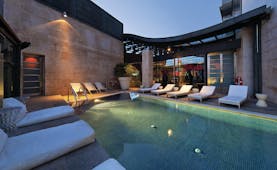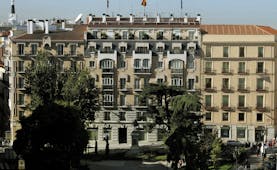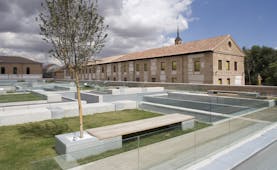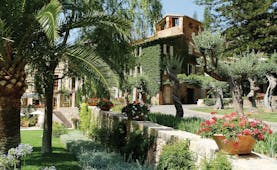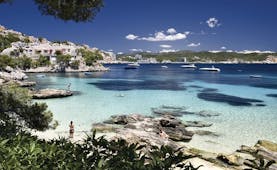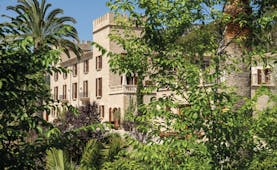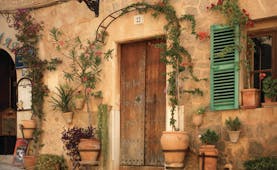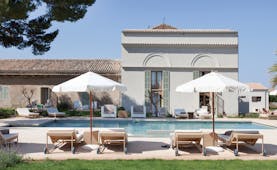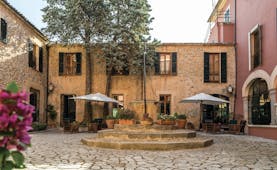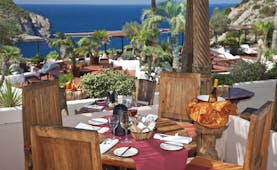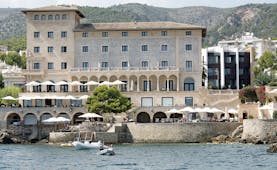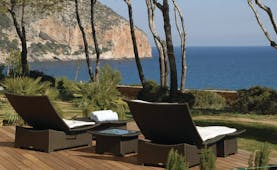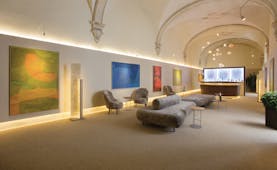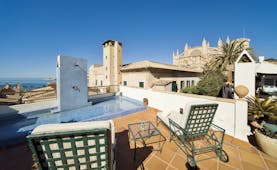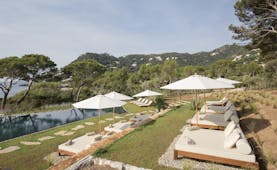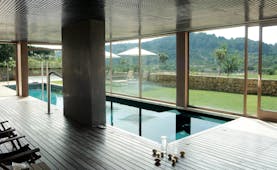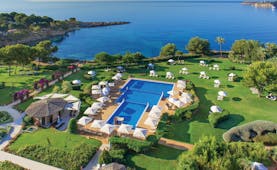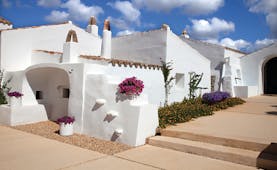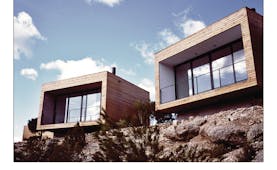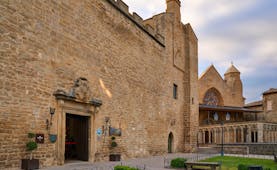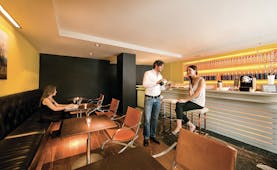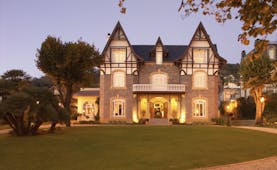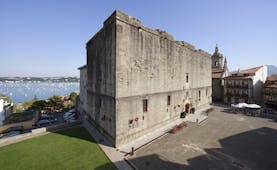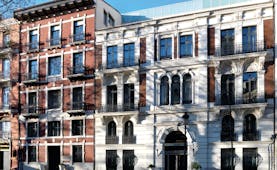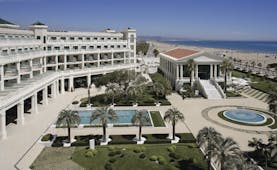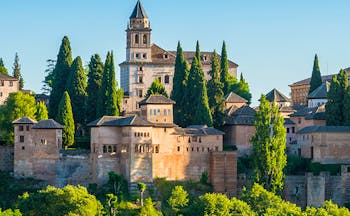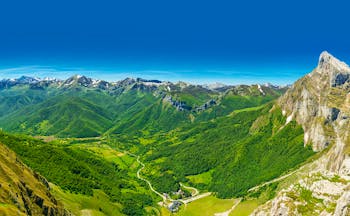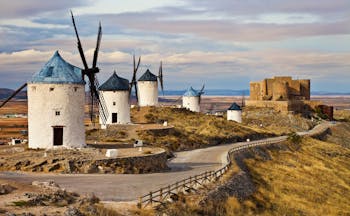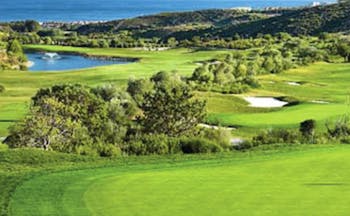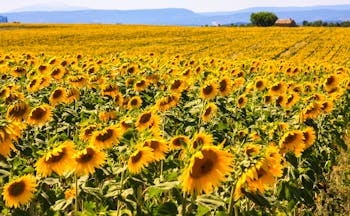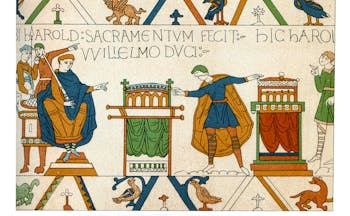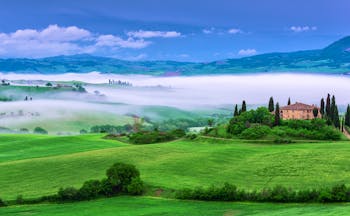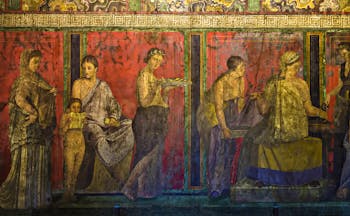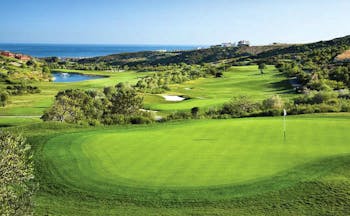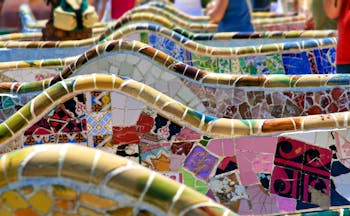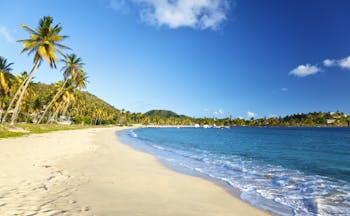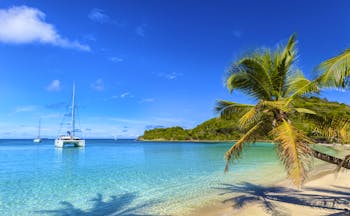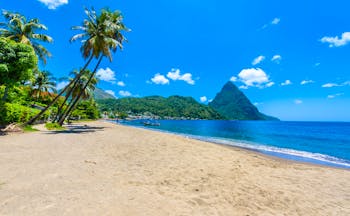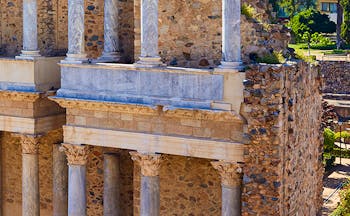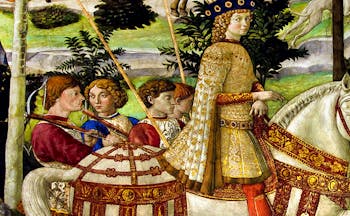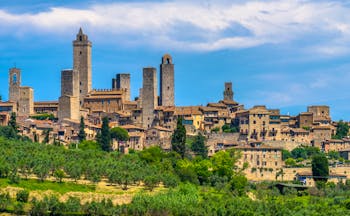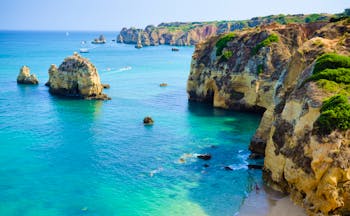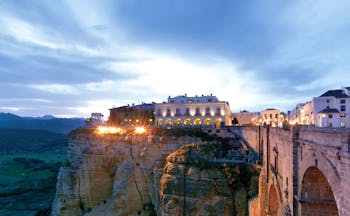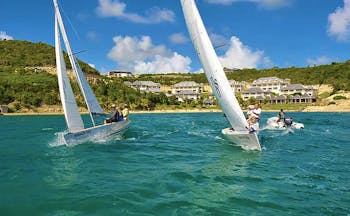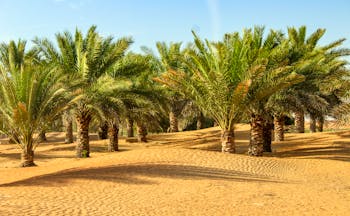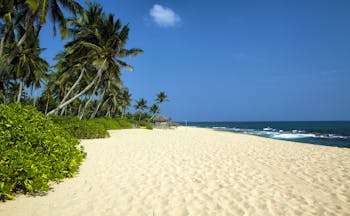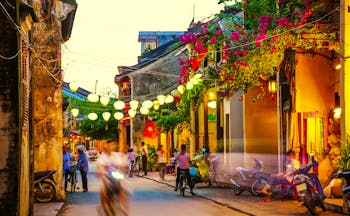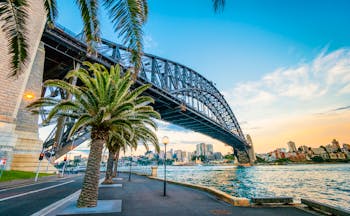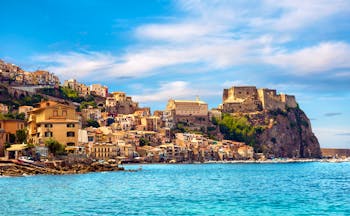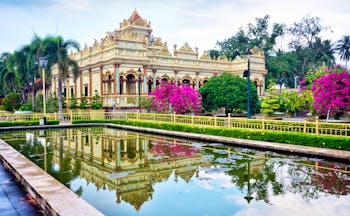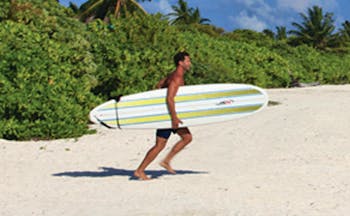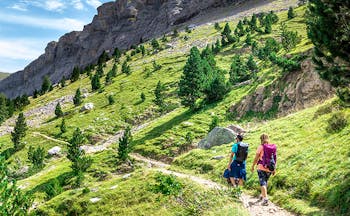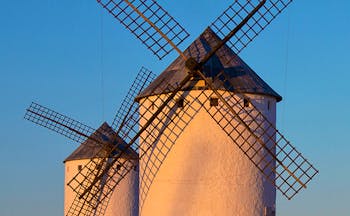Luxury fly-drive touring holiday Along the Silver Way in Spain from Andalusia to Santiago de Compostela
This 9-night fly-drive touring holiday starts in the Andalusian city of Seville. Spend the first few days of this luxury tour enjoying the warm sunshine of Andalusia and exploring the Arabic influences on the grand architecture of this famous city. Explore such grand buildings as the Real Alcazar Palace, and indulge in traditionally Andalusian tapas, and perhaps even try some flamenco. From here, collect a hire car and begin your journey north along this famous pilgrimage route. Your next stop is Caceres, an ancient walled city that pre-dates the Roman Empire. Explore the winding streets of the well-preserved parts of this city, appreciating the austere grandeur of the religious buildings, and the quaint charm of the cafes and houses. Then continue further north to Salamanca, a youthful University City set amidst the prestigious Castilla y Leon vineyards. Spend your time exploring the diverse history and architecture of the old and new cathedrals and enjoying the beauty of the riverside city. Next, travel through rolling dynamic countryside struck by red cliffs and dotted with castles to spend one night in the ancient walled city of Leon. Spend the afternoon at the House of Light, marvelling at the golden glow of the cathedral, and at Casa de los Botines, designed by Antoní Gaudi. The final stop on this touring holiday is in Santiago de Compostela, the capital of Galicia. Spend two nights at the Parador de Santiago de Compostela, which overlooks the city’s beautiful cathedral, reportedly the final resting place of Saint James the Apostle. This cathedral is the end destination of many pilgrimage routes across Spain for this very reason, though the surrounding city and the breath-taking coastal landscape are reason enough to visit this beautiful part of Spain. On your final day on this touring holiday return your hire-car and fly back to the UK.
Highlights
Seville • Guided group tour of Seville's Old Town • Tablao flamenco show in Seville • Caceres • Guided group tour of Caceres • Salamanca • Guided group tour of Salamanca • Tapas tasting in El Monje restaurant in Salamanca • Leon • 'Silver Way' lunch or dinner • Santiago de Compostela
Day by day
Fly from London to Seville, and check into the Hospes las Casas del Rey de Baeza, an 18th century building with a picturesque central courtyard, just a few minutes’ walk from the Cathedral. You spend two nights in Seville.
Spend your day in Seville getting to grips with the Moorish influences on the town, from the Real Alcázar to the La Giralda tower. The Real Alcázar is a Moorish Palace, decorated with cusped and keyhole arches that are typical of the style, has pools in the centre of its inner courtyards, and tranquil landscaped gardens around it. La Giralda tower is the cathedral’s bell tower, and its design is reminiscent of the minarets of Morocco. The cathedral itself is defined by large stone domes and free-standing archways. Expressions Holidays includes a 2.5 hour guided tour around the Barrio de Santa Cruz with this holiday, the most culturally intriguing quarter of the city, characterised by its white-washed houses and pretty lanes. Guests can also choose between viewing an authentic Andalucian Flamenco Show, and a Corte del Jamón workshop, which demonstrates the art of cutting the Iberian Ham at the centre of so many popular Spanish dishes, particularly Tapas. We recommend a relaxed stroll around the water and across the bridges of the Plaza de España, as well as a visit to the market stalls around the Plaza del Salvador. The local businessmen sell primarily arts and crafts, including the famous Azulejo, a form of painted Spanish ceramic work. Other attractions in Seville include the horse-drawn carriages in the Maria Luisa Park, the iconic Metropol Parasol wooden sculpture, the 18th century Plaza de Toros bullring, the Museum of Fine Arts, and, of course, the annual Feria in April. A rooftop pool terrace at your hotel offers delightful views across the city roofs throughout the day, but it is at its most atmospheric in the evenings.
Collect a hire-car and drive on to the Hospes Palacio de Arenales, located just outside Cáceres. This 17th Century hotel is an idyllic rural retreat which combines charming history with chic, contemporary design. You spend two nights in Caceres.
The walled city of Caceres itself has been heavily influenced by its dramatic history of battles between the Moors and the Christians. As a result, the architecture bears marks of Roman, Islamic, Gothic, and Italian Renaissance styles, though the settlement is said to pre-date Roman times. A long wander along Caceres’ streets will reveal to you the many fortified houses, palaces, and towers that sculpted the city’s horizon, over 30 of which are in the Islamic style. The Torre del Bujaco, which dates back to the 12th century and overlooks the central Plaza Mayor, is the most famous. On a quiet day, or in the evenings, the mediaeval appearance of Caceres will become most apparent, and its atmosphere will be at its richest. The austere and mediaeval Concatedral de Santa María is situated on a Plaza of the same name, and was built in the 15th century. Inside, a magnificent, towering cedar altarpiece was added in the 16th century, while there are also several noble tombs and chapels, and an ecclesiastical Museum. The bell tower offers unrivalled views across the Old Town. The Arco del Cristo on the Puerta del Río, though unassuming amidst the winding passages and steep streets of the Old Town, is a gateway that dates back to Roman times. Some other intriguing sights within Caceres include the Iglesia de San Francisco Javier, an 18th century Jesuit Church, on the Plaza de San Jorge, and the Renaissance-style Palacio de la Diputación. This historic city offers much in the way of cultural attractions, as well as capturing the essence of Spanish rural life. Your short stay here will have a noticeably different tone to your stay in Seville, as well as Salamanca, where you progress on to next.
Leave Cáceres for Salamanca, the capital of Castilla y León. You spend two nights in Salamanca.
The city of Salamanca gains its lively, youthful atmosphere from the Universidad de Salamanca, and is dominated by the grand sandstone architecture for which it is known. Spend time in the dynamic old and new cathedrals, the Art Nouveau and Art Deco museum at Casa Lys, and in one of the cafes on the spectacular Plaza Mayor watching the world go by. The old and new cathedrals together form the Cathedral of Salamanca, with the new effectively leaning against the old, but both have distinctive appearances and histories. The old cathedral was founded in the 12th century but wasn’t completed until the 14th with Romanesque and Gothic additions. On top of the large cycle of 53 tableaux in the apse, the main attraction of this cathedral may be the Mediaeval Arabic dome which crowns the building. Inside, the central cavernous hall reaches up into the dome’s lavishly decorated peak, and from the outside, the dome sometimes takes on a blueish tinge, and rises high above the rest of the city. The new cathedral was finished the 18th century and combines both the Baroque and Gothic style. The Baroque dome and the bell tower distinguish this cathedral from its neighbour. New exterior sculptures, including modern additions such as astronauts, were added in the 20th century to repair the damage of time. You may also wish to visit the Casa de las Conchas, a Gothic palace whose walls have been adorned with shells. This stop on your touring holiday includes a guided 2.5-hour tour of Salamanca’s history, and a choice between a tasting session of authentic regional tapas and an exclusive visit to the Convent of San Esteban, with access to parts of the building restricted to tourists. After a busy morning exploring the city’s culture, perhaps take a stroll across the many bridges and along the waterways. It is perhaps in this that visitors can uncover Salamanca’s true beauty. For a day-trip outside of the city, perhaps visit a small town such as Toro. The vineyards of this town pre-date Roman times, making it the perfect place to sample some of the Castilla y Leon wines, particularly the robust reds. The town of Rueda produces many of its own aromatic variations on Verdejo, Sauvignon, and Espumoso wines. The Rueda Dorada is a fortified white wine named after its golden colour.
Leave Salamanca in the early morning and travel north to the mediaeval walled-city of Leon for one night at the NH Collection hotel on the Plaza Mayor. Perhaps take a short detour to Astorga en route to see the fairy-tale Episcopal Palace, with its narrow turrets, blue-black pointed roofs, arched windows, and the unusual hue of its stone. Or stop off in picturesque La Bañeza to see the colourful townhouses and charming irregular squares. The Parador de Leon is housed in the converted Convent de San Marcos, which was once a hospital for those on the pilgrim’s route, and still retains its Plateresque façade and the Jacobean medallions within. Begin your afternoon with a visit to the 13th Century cathedral, often referred to as the House of Light due to its stunning stained-glass windows, which make up 1,200 square foot across the building’s walls and cast a golden glow on the vast central chamber. The Casa de los Botines in Leon was designed by Antoni Gaudi. Though it is more reserved than his work in Barcelona, the building still has the fluidity typical of his style, with a soft, rounded appearance, thin turrets, and curved roofs. The Old Town of Leon is characterised by the narrow one-way streets, arcaded squares, and lively tapas bars typical of old cities such as this. The Basilica of San Isidoro is built into the old surrounding walls, on the site of the ancient temple of Mercury. Built in the 11th century, it provided the blueprint for the other Romanesque churches across Northern Spain. Its curved colourful ceiling and shorter Corinthian pillars give the building unmistakable charm. For something a little more modern, peruse the contemporary, experimental exhibitions at the MUSAC, which prides itself on its revolutionary outlook. You spend one night in Leon.
After exploring Leon, drive north-west to Santiago de Compostela, the Galician capital. Punctuated by green open spaces, this city captures the essence of Northern Green Spain. Stay for two nights in the Parador de Santiago de Compostela, a historic hotel that captures the elegance and luxury of this devout city.
The focus of your one full day in Santiago de Compostela is the cathedral just across the square outside your hotel, believed to be the final resting place of Saint James the Apostle, and consequently the revered endpoint of both the Saint James Pilgrimage Route and the Silver Way. The breath-taking decorative, elaborate, and iconographic front façade was not added until the 18th century, but has become something of an icon for the city. Enter through the triple-columned Door of Glory, one of the cathedral’s finest additions; tours are available to elaborate on the intricate carvings. Inside, however, allow time to walk around the Plateresque cloister, accessible through the museum and reportedly one of the most important and beautiful in Spain. Annexed onto the cloister are the library, Chapter Room, and the Chapel of Relics, all of which offer a valuable insight into why this cathedral proves so inspirational to religious Spaniards. Through the museum you will also be granted access to parts of the Archbishops’ Palace, a large tapestry, and the stunning third-floor views across neighbouring Praza de Obradoiro. On the outskirts of Santiago de Compostela is the City of Culture, a dynamic complex of museums, libraries, art exhibitions, and stunning architecture designed by an American architect. The artwork of local and national artists is celebrated at the Galician Museum of Modern Art, situated beside the peaceful and idyllic Bonaval Park. For the best views in the city, head to the Paseo da Ferradura in the Alameda Park. See the cathedral rise majestically above the buildings of the city in the day and appreciate the atmospheric lighting that illuminates the building’s ornate towers in the evening. If time permits, it is worth driving west to the Atlantic Coast, to enjoy the phenomenal scenery of the Rias Baixas inlets, and taste some of the shell-fish and white wine that this region is famous for on your final night in Spain.
On your final day, return your hire-car and fly from Santiago de Compostela to London.
It has been a lovely holiday & once again, you did not disappoint. Thank you again for everything. We look forward to contacting you again for our next adventure.Mrs H, July 2025
Holiday price guide Prices from £2,530 per person based on two people sharing a double or twin room.
Holiday Code SNFD01
Call us on 01392 441245
Luxury fly-drive touring holiday Along the Silver Way in Spain from Andalusia to Santiago de Compostela
Fly from London to Seville, and check into the Hospes las Casas del Rey de Baeza, an 18th century building with a picturesque central courtyard, just a few minutes’ walk from the Cathedral. You spend two nights in Seville.
Spend your day in Seville getting to grips with the Moorish influences on the town, from the Real Alcázar to the La Giralda tower. The Real Alcázar is a Moorish Palace, decorated with cusped and keyhole arches that are typical of the style, has pools in the centre of its inner courtyards, and tranquil landscaped gardens around it. La Giralda tower is the cathedral’s bell tower, and its design is reminiscent of the minarets of Morocco. The cathedral itself is defined by large stone domes and free-standing archways. Expressions Holidays includes a 2.5 hour guided tour around the Barrio de Santa Cruz with this holiday, the most culturally intriguing quarter of the city, characterised by its white-washed houses and pretty lanes. Guests can also choose between viewing an authentic Andalucian Flamenco Show, and a Corte del Jamón workshop, which demonstrates the art of cutting the Iberian Ham at the centre of so many popular Spanish dishes, particularly Tapas. We recommend a relaxed stroll around the water and across the bridges of the Plaza de España, as well as a visit to the market stalls around the Plaza del Salvador. The local businessmen sell primarily arts and crafts, including the famous Azulejo, a form of painted Spanish ceramic work. Other attractions in Seville include the horse-drawn carriages in the Maria Luisa Park, the iconic Metropol Parasol wooden sculpture, the 18th century Plaza de Toros bullring, the Museum of Fine Arts, and, of course, the annual Feria in April. A rooftop pool terrace at your hotel offers delightful views across the city roofs throughout the day, but it is at its most atmospheric in the evenings.
Collect a hire-car and drive on to the Hospes Palacio de Arenales, located just outside Cáceres. This 17th Century hotel is an idyllic rural retreat which combines charming history with chic, contemporary design. You spend two nights in Caceres.
The walled city of Caceres itself has been heavily influenced by its dramatic history of battles between the Moors and the Christians. As a result, the architecture bears marks of Roman, Islamic, Gothic, and Italian Renaissance styles, though the settlement is said to pre-date Roman times. A long wander along Caceres’ streets will reveal to you the many fortified houses, palaces, and towers that sculpted the city’s horizon, over 30 of which are in the Islamic style. The Torre del Bujaco, which dates back to the 12th century and overlooks the central Plaza Mayor, is the most famous. On a quiet day, or in the evenings, the mediaeval appearance of Caceres will become most apparent, and its atmosphere will be at its richest. The austere and mediaeval Concatedral de Santa María is situated on a Plaza of the same name, and was built in the 15th century. Inside, a magnificent, towering cedar altarpiece was added in the 16th century, while there are also several noble tombs and chapels, and an ecclesiastical Museum. The bell tower offers unrivalled views across the Old Town. The Arco del Cristo on the Puerta del Río, though unassuming amidst the winding passages and steep streets of the Old Town, is a gateway that dates back to Roman times. Some other intriguing sights within Caceres include the Iglesia de San Francisco Javier, an 18th century Jesuit Church, on the Plaza de San Jorge, and the Renaissance-style Palacio de la Diputación. This historic city offers much in the way of cultural attractions, as well as capturing the essence of Spanish rural life. Your short stay here will have a noticeably different tone to your stay in Seville, as well as Salamanca, where you progress on to next.
Leave Cáceres for Salamanca, the capital of Castilla y León. You spend two nights in Salamanca.
The city of Salamanca gains its lively, youthful atmosphere from the Universidad de Salamanca, and is dominated by the grand sandstone architecture for which it is known. Spend time in the dynamic old and new cathedrals, the Art Nouveau and Art Deco museum at Casa Lys, and in one of the cafes on the spectacular Plaza Mayor watching the world go by. The old and new cathedrals together form the Cathedral of Salamanca, with the new effectively leaning against the old, but both have distinctive appearances and histories. The old cathedral was founded in the 12th century but wasn’t completed until the 14th with Romanesque and Gothic additions. On top of the large cycle of 53 tableaux in the apse, the main attraction of this cathedral may be the Mediaeval Arabic dome which crowns the building. Inside, the central cavernous hall reaches up into the dome’s lavishly decorated peak, and from the outside, the dome sometimes takes on a blueish tinge, and rises high above the rest of the city. The new cathedral was finished the 18th century and combines both the Baroque and Gothic style. The Baroque dome and the bell tower distinguish this cathedral from its neighbour. New exterior sculptures, including modern additions such as astronauts, were added in the 20th century to repair the damage of time. You may also wish to visit the Casa de las Conchas, a Gothic palace whose walls have been adorned with shells. This stop on your touring holiday includes a guided 2.5-hour tour of Salamanca’s history, and a choice between a tasting session of authentic regional tapas and an exclusive visit to the Convent of San Esteban, with access to parts of the building restricted to tourists. After a busy morning exploring the city’s culture, perhaps take a stroll across the many bridges and along the waterways. It is perhaps in this that visitors can uncover Salamanca’s true beauty. For a day-trip outside of the city, perhaps visit a small town such as Toro. The vineyards of this town pre-date Roman times, making it the perfect place to sample some of the Castilla y Leon wines, particularly the robust reds. The town of Rueda produces many of its own aromatic variations on Verdejo, Sauvignon, and Espumoso wines. The Rueda Dorada is a fortified white wine named after its golden colour.
Leave Salamanca in the early morning and travel north to the mediaeval walled-city of Leon for one night at the NH Collection hotel on the Plaza Mayor. Perhaps take a short detour to Astorga en route to see the fairy-tale Episcopal Palace, with its narrow turrets, blue-black pointed roofs, arched windows, and the unusual hue of its stone. Or stop off in picturesque La Bañeza to see the colourful townhouses and charming irregular squares. The Parador de Leon is housed in the converted Convent de San Marcos, which was once a hospital for those on the pilgrim’s route, and still retains its Plateresque façade and the Jacobean medallions within. Begin your afternoon with a visit to the 13th Century cathedral, often referred to as the House of Light due to its stunning stained-glass windows, which make up 1,200 square foot across the building’s walls and cast a golden glow on the vast central chamber. The Casa de los Botines in Leon was designed by Antoni Gaudi. Though it is more reserved than his work in Barcelona, the building still has the fluidity typical of his style, with a soft, rounded appearance, thin turrets, and curved roofs. The Old Town of Leon is characterised by the narrow one-way streets, arcaded squares, and lively tapas bars typical of old cities such as this. The Basilica of San Isidoro is built into the old surrounding walls, on the site of the ancient temple of Mercury. Built in the 11th century, it provided the blueprint for the other Romanesque churches across Northern Spain. Its curved colourful ceiling and shorter Corinthian pillars give the building unmistakable charm. For something a little more modern, peruse the contemporary, experimental exhibitions at the MUSAC, which prides itself on its revolutionary outlook. You spend one night in Leon.
After exploring Leon, drive north-west to Santiago de Compostela, the Galician capital. Punctuated by green open spaces, this city captures the essence of Northern Green Spain. Stay for two nights in the Parador de Santiago de Compostela, a historic hotel that captures the elegance and luxury of this devout city.
The focus of your one full day in Santiago de Compostela is the cathedral just across the square outside your hotel, believed to be the final resting place of Saint James the Apostle, and consequently the revered endpoint of both the Saint James Pilgrimage Route and the Silver Way. The breath-taking decorative, elaborate, and iconographic front façade was not added until the 18th century, but has become something of an icon for the city. Enter through the triple-columned Door of Glory, one of the cathedral’s finest additions; tours are available to elaborate on the intricate carvings. Inside, however, allow time to walk around the Plateresque cloister, accessible through the museum and reportedly one of the most important and beautiful in Spain. Annexed onto the cloister are the library, Chapter Room, and the Chapel of Relics, all of which offer a valuable insight into why this cathedral proves so inspirational to religious Spaniards. Through the museum you will also be granted access to parts of the Archbishops’ Palace, a large tapestry, and the stunning third-floor views across neighbouring Praza de Obradoiro. On the outskirts of Santiago de Compostela is the City of Culture, a dynamic complex of museums, libraries, art exhibitions, and stunning architecture designed by an American architect. The artwork of local and national artists is celebrated at the Galician Museum of Modern Art, situated beside the peaceful and idyllic Bonaval Park. For the best views in the city, head to the Paseo da Ferradura in the Alameda Park. See the cathedral rise majestically above the buildings of the city in the day and appreciate the atmospheric lighting that illuminates the building’s ornate towers in the evening. If time permits, it is worth driving west to the Atlantic Coast, to enjoy the phenomenal scenery of the Rias Baixas inlets, and taste some of the shell-fish and white wine that this region is famous for on your final night in Spain.
On your final day, return your hire-car and fly from Santiago de Compostela to London.
It has been a lovely holiday & once again, you did not disappoint. Thank you again for everything. We look forward to contacting you again for our next adventure.Mrs H, July 2025
Holiday price guide Prices from £2,530 per person based on two people sharing a double or twin room.
Holiday Code SNFD01
Our prices include
● Scheduled flights with Easyjet from London to Seville, and Santiago de Compostela to London (return flights only available on Wednesdays and Saturdays)
● Hire of a Group B car for eight days
● 2 nights’ bed and breakfast in a Dreamer room at the Hospes las Casas del Rey de Baeza in Seville
● 2 nights’ bed and breakfast in a Dreamer room at the Hospes Palacio de Arenales in Caceres
● 2 nights’ bed and breakfast in a Dreamer room at the Hospes Palacio de San Esteban in Salamanca
● 1 night’s bed and breakfast in a Superior double room at the NH Collection Plaza Mayor in Leon
● 2 nights’ bed and breakfast in a standard double room at the Parador de Santiago de Compostela in Santiago de Compostela
● Guided group tour of Seville's Old Town, 2 hours 30 minutes
● Tablao flamenco show in Seville
● Guided group tour of Caceres, 3 hours
● Special 'Silver Way' lunch or dinner
● Guided group tour of Salamanca's historic centre, 2 hours and 30 minutes
● Tapas tasting in El Monje restaurant in Salamanca
● Concierge service and Expressions Holidays regional helpful hints
Our prices do not include
● Early check-in or late check-out at any hotels (although we can arrange this on request at additional cost)
● Any other services not mentioned above, such as transfers and meals except breakfast at hotels
● Personal holiday insurance. This is essential and cover should be in place from when you book the holiday.
● Local tourist tax, usually between Euros 1 and 3 per person per night, and payable locally to the hotel
● Transfers in each town or city
Additional information
Driving times for this touring holiday
Seville to Caceres 2 hours 35 minutes
Caceres to Salamanca 1 hour 50 minutes
Salamanca to Leon 2 hours 5 minutes
Leon to Santiago de Compostela 3 hours 20 minutes
Call us on 01392 441245
Luxury fly-drive touring holiday Along the Silver Way in Spain from Andalusia to Santiago de Compostela
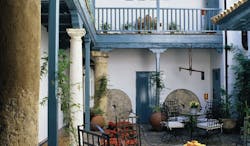
Hospes Las Casa del Rey de Baeza is a charming, 4-star boutique hotel in the heart of Seville's Old Town. Delicious, modern Anadalusian cuisine and refreshing rooftop cocktails make it a restorative haven from the bustle of the city.
Dreamer room

Hospes Palacio de Arenales is a luxury, 5-star boutique hotel in a beautiful natural location. Delicious cuisine, excellent spa facilities and beautifully tranquil grounds afford guests a truly relaxing and indulgent experience.
Dreamer room

Hospes Palacio de San Esteban is a 5-star luxury boutique hotel in a 16th century converted monastery. Serene grounds, gourmet cuisine and an excellent spa afford guests a tranquil retreat after a day exploring Salamanca's cultural and historical delights.
Dreamer room
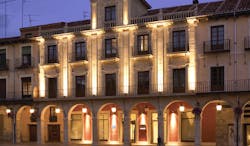
NH Collection León Plaza Mayor is a 4-star boutique hotel in an excellent central location. Juxtaposing historic architectural features with modern facilities, it is a comfortable, elegant spot to recuperate after enjoying the sights of León.
Superior double room

Parador de Santiago de Compostela is a 5-star deluxe, historic hotel in an excellent location. Grand architecture and interiors and a restaurant serving authentic gourmet cuisine ensure that guests experience local culture and heritage.
Standard double room
It has been a lovely holiday & once again, you did not disappoint. Thank you again for everything. We look forward to contacting you again for our next adventure.Mrs H, July 2025
Holiday price guide Prices from £2,530 per person based on two people sharing a double or twin room.
Holiday Code SNFD01
Call us on 01392 441245
Luxury fly-drive touring holiday Along the Silver Way in Spain from Andalusia to Santiago de Compostela
About Andalusia
An Expressions tailor-made holiday to Andalusia offers the chance to explore a holiday destination famed for its indulgent climate and coastal appeal. The region cannot deny its fair share of sun, sea and sand, but what is often neglected to mention is the region's immense variety. Comprising of eight unique provinces, Andalusia spans west to east from the wetlands and the Atlantic Ocean to the deserts and the popular Costa del Sol on the Mediterranean Sea. Poised at the southern-most tip of the Iberian Peninsula, Andalusia acts as a gateway between the European and African continents, harbouring a myriad of influences that speak of the layers of civilisation that have roamed and inhabited the land. From the vibrant cities to the tiny white-washed villages, from vast sierras to the extensive coastline, Andalusia is a region of contrasts which promises an authentic luxury holiday.
Highlights of Andalusia
With 800km of coastline, there are plenty of beaches to choose from - facing the Atlantic are the long, sandy beaches of the Costa de la Luz, extending south from the Portuguese border to Tarifa; covering the area between Malaga and Gibraltar is the famous Costa del Sol, known for its numerous beach resorts which range from the cheap and cheerful to exclusive luxury; to the south of Granada is the Costa Tropical, a stretch of coast with sandy coves and a pleasant microclimate; and to the east is the more rugged Costa de Almeria. A number of luxury resorts and hotels are located along each of these coastlines. Surrounding Granada is the Sierra Nevada, a mountain range where the Spanish mainland's highest peak can be found and home to white-washed mountain villages. In the far east of Andalusia is the Sierras de Cazorla, Segura y Las Villas Natural Park, the largest protected area in Spain where you can find hiking trails, mountain villages and many wild animals. Further south is The Cabo de Gata Natural Park, a land and sea reserve near Almeria which is home to unspoilt scenery and an abundance of wildlife. In the west of the region is the Doñana National Park, an extensive area in the delta of the Guadalquivir River which includes marshland and sand dunes and is a breeding ground of the endangered Iberian Lynx. Thanks to the region's great variety in landscapes, culture and cuisine, a luxury holiday to Andalusia is sure to be a delightful experience.
Cultural highlights of Andalusia
Many of the Andalusia's cultural highlights can be found in the three Moorish cities of Cordoba, Granada and Seville, all of which are home to a number of excellent luxury hotels. Cordoba, a UNESCO World Heritage Site and former centre of Muslim control during Andalusia's colonisation by the Islamic Empire. At the city's heart is the astounding Mezquita de Cordoba, a mediaeval mosque turned Catholic cathedral with endless Moorish arches, columns and glinting tiles of vibrant hues. Other highlights include the fascinating Jewish quarter and Roman ruins galore. Nearer the coast is Granada, where Islamic rule endured the longest and the magical Alhambra remains as a monument to this legacy. A 9th century palace fortress, it guards over the city from an elevated crag amongst vast, aromatic gardens. To the west, on the peaceful plains of River Guadalquivir, Seville quietly awaits discovery along with its three World Heritage Sites: the Alcazar palace, the gothic Cathedral and the General Archive of the Indies. Other towns and cities of interest in Andalusia include Jerez de la Frontera, where you can visit the sherry bodegas which make the city famous and watch the dressage displays which are held at The Royal Andalusian School of Equestrian Art; Cadiz, the oldest city in Europe which is surrounded almost entirely by water; Ronda, a spectacular city which is split in half by a narrow gorge; Malaga, birthplace of Picasso and home to a Museum which displays a collection of his work; the small town of Baeza, where you can find stunning examples of Renaissance architecture; and Almeria, a coastal city which is dominated by the Alcazaba, the largest Moorish fortress in Spain. During your stay in Andalusia make sure to witness the seductive art of flamenco. Alluring, passionate and cathartic, it's easy to understand how this gypsy tradition has become one of the most familiar emblems of Spanish culture.
Festivals in Andalusia
There are a huge number of local festivals held in villages, towns and cities throughout Andalusia, many of which have a religious significance. 5 January: Three Kings parades, February: Shrove Tuesday Carnivals, February: Seville Tapas Fair, February to March: Jerez Flamenco Festival, March/April: Holy week celebrations, April to October: Seville Bullfighting season, April/May: Seville Spring Fair, April/May: Úbeda Classical Music Festival, Mid May: Jerez Horse Fair, June to July: Granada Music & Dance Festival, June - July: Cordoba Guitar Festival, August: Malaga Summer Fair, September: Ronda bullfighting festival, November: Granada Jazz Festival.
Gastronomy in Andalusia
Cuisine in Andalusia is diverse, varying throughout the region and combining Arabic flavours with more common Mediterranean ingredients such as seafood, olive oil and an abundance of fresh fruit and vegetables. As the birthplace of tapas, Andalusia is an excellent place to try the snacks which are often served free with drinks in Granada. Other Andalusian specialities include Serrano ham from the Sierra Nevada and sherry from Jerez de la Frontera, as well as dishes such as ‘Ajo blanco’ (a white gazpacho), ‘Espetos de sardina’ (roasted sardines), ‘Huevos a la flamenca’ (baked eggs with vegetables) and ‘Fritura de pescado’ (mixed fried fish).
Call us on 01392 441245
Luxury fly-drive touring holiday Along the Silver Way in Spain from Andalusia to Santiago de Compostela
About Green Spain
Green Spain features some of the best four and five star hotels in the regions of Galicia, Asturias and Cantabria in northern Spain, including coastal properties, city hotels and rural retreats. From the pretty rivers on the west coast of Galicia to the spectacular mountains of Asturias and the prehistoric caves of Cantabria, Green Spain is a picturesque area in the north of Spain. With quiet sandy beaches, green landscapes, charming villages and Romanesque architecture lining the famed pilgrimage route which leads to Santiago de Compostela, there is plenty to discover. Although many of those who go on holiday to northern Spain simply pass through en route to Santiago de Compostela, the entire region has much to offer. Stunning beaches are almost untouched, whilst the mild climate has produced rich vegetation which covers unspoilt countryside. Both along the coast and further inland there are attractive cities, towns and villages with a wealth of historical, architectural and cultural sights to discover. Galicia and Asturias have strong cultural identities, both fiercely defending their Celtic traditions which include playing bagpipes, and even speaking their own languages. In the far west is the remote region of Galicia, known as ‘The land of a thousand rivers’ thanks to the numerous wide inlets that run into the sea. The Atlantic coastline is rugged, with rocky headlands, idyllic beaches and isolated fishing villages, whilst the interior is hilly and overwhelmingly green. To the east is the Principality of Asturias, an enchanting region of contrasts with secluded beaches as well as peaceful countryside. Forming a natural barrier in the south are the towering Picos de Europa mountains, a spectacular area with small mountain villages, lush pastures, emerald forests, sheer gorges and glittering lakes. Next is the small, mountainous region of Cantabria, where white sand beaches line the coastline facing the Bay of Biscay, separated by rugged headlands.
Highlights of Green Spain
Santiago de Compostela cathedral, the supposed resting place of St James the Apostle, from whose rooftop you can enjoy unforgettable views over the old town. The attractive Galician cities of Ourense, Pontevedra and Lugo, all with historical sites including Roman architecture. Maritime cities along the Atlantic coastline including A Coruna, Ferrol, Vigo, and Baiona. The Tower of Hercules, an ancient Roman lighthouse near A Coruna. Galicia's fjord-like inlets known as the Rías Altas (along the north-west coast) and the Rías Baixas (along the southwestern coast). The dramatic Cape Finisterre, so called because it was thought to be the westernmost point in Europe. The stunning Picos de Europa mountains, home to a diverse range of walking trails and the atmospheric Covadonga Sanctuary. Oviedo, the attractive capital of Asturias which is home to some remarkable pre-Romanesque churches. Altamira Caves, a UNESCO World Heritage Site with ancient rock paintings which are up to 20000 years old. Comillas, a beachside town with impressive architecture including a building designed by Antonio Gaudí. Pleasant towns along the shores of the Cantabrian Sea including Gijón and Llanes. Santillana del Mar, a picturesque village inland with a number of well-preserved mediaeval buildings. Santander, a lively port city with a historic quarter, a modern centre and the famous El Sardinero beach.
Festivals in Green Spain
February/March: Carnivals celebrating Lent, March: Vigo Reconquest Festival; March/April: Holy week celebrations, July: ‘A Rapa das Bestas’ horse festival held in Galician villages, July: Saint James the Apostle festival in Santiago de Compostela, July: Nava Cider Festival (near Oviedo), August: Festival of San Roque in Betanzos (near A Coruna), August: Santander International Festival.
Gastronomy in Green Spain
Cuisine in the north of Spain tends to be simple and hearty, making good use of the excellent local produce including abundant fish and seafood, plentiful meat and game and a great variety of vegetables. The regions produce a range of dairy products, from the mild soft cheeses of Galicia to the smoked cheese of Cantabria and the blue cheeses of Asturias. Asturias is known for its dry cider, whilst Galicia produces high quality wines, both crisp whites and fruity reds, as well as a strong liqueur, ‘Orujo.’ Local dishes include ‘Vieras de Santiago’ (Scallops, the symbol of St James, which are baked in their shells), ‘Empanada gallega’ (a Galician meat pasty), ‘Lacón con grelos’ (pork shoulder with chorizo, turnips and potatoes), ‘Caldo gallego’ (thick soup with meat, potatoes and beans), ‘Fabada’ (an Asturian stew with pork and beans), ‘Tarta de Santiago’ (an almond cake), ‘La quesada’ (a Cantabrian cheesecake) and ‘Sobaos Pasiegos’ (Cantabrian sponge cakes).
Climate in Green Spain
Green Spain has a wet and mild climate with warm summers and cool winters. Summer is a popular time to visit northern Spain as the weather is sunny yet comfortable, but you can expect good weather in Spring and Autumn as well. Rain falls throughout the year although there is little during the summer months. Temperatures are rarely extreme, although mountainous areas can be very cold in winter with snow falling.
Call us on 01392 441245
Luxury fly-drive touring holiday Along the Silver Way in Spain from Andalusia to Santiago de Compostela
About Heart of Spain
An Expressions tailor-made holiday to the Heart of Spain feature some of the best four and five star hotels in central Spain, featuring vineyard hotels, rural estates and city properties. Located at the geographical heart of Spain is its vibrant capital, Madrid, where days can be filled with art galleries and atmospheric outdoor cafes, and evenings promise an energetic nightlife. Surrounding the city are the dry plains of the country's central plateau which are divided by spectacular mountain ranges and dotted with numerous castles, magnificent cathedrals and ancient Roman ruins. The regions which make up Spain's central plateau have all played a hugely important role in the history of modern Spain, which is evident in the numerous castles which were built to protect towns and villages as the Moors fought the Christians in the 10th and 11th centuries. These are some of the least visited parts of Spain where few tourists venture outside of the main cities, ensuring that visitors will leave feeling like they have discovered something new. At the centre of Spain is Madrid, where atmospheric cobbled streets link bustling squares which are filled with pavement cafes and flea markets, whilst tree-line boulevards are overlooked by neo-classical buildings. Surrounding the city are the dry plains of the country's central plateau which are divided by spectacular mountain ranges and dotted with numerous castles, magnificent cathedrals and ancient Roman ruins. To the north of Madrid is Castilla y León, an elevated region which has played a hugely important role in the history of modern Spain. Rolling countryside is littered with historic cities, isolated villages and mediaeval castles, built by the Christians to defend against the Moorish invaders. Salamanca, Avila, Segovia, León, Valladolid and Burgos are all home to a wealth of art and stunning architecture, including Gothic cathedrals and Roman structures. Away from the cities are natural attractions including mountain ranges and nature reserves, with wheat fields and vineyards covering the high plateaus. To the south and east of Madrid is Castilla-La Mancha, an expansive region with dry plains stretching towards mountains in the distance. The predominantly flat scenery is made up of olive groves, wheat fields, extensive vineyards, hilltop castles and the iconic windmills described by Cervantes. Head to the historic city of Toledo, where Christian, Jewish and Arab cultures blend to create a popular tourist destination, or to Cuenca, a dramatic town where houses seemingly dangle over a plunging gorge. Further west towards the border with Portugal is Extremadura, a region with green pastures and rolling hills, forests and fertile river valleys, as well as charming towns boasting stunning examples of Roman architecture. Elaborate palaces and manor houses are found in clusters throughout the region, built by conquistadors with gold from the New World.
Highlights of the Heart of Spain
The three world-class art galleries which make up Madrid's Golden Triangle of Art, home to works by Pablo Picasso, Salvador Dalí and Francisco de Goya. The historical sights of Old Madrid, including the lavish Royal Palace, the grand Plaza Mayor and the city's spiritual centre, Puerta del Sol. Parque del Retiro, a popular spot for relaxation in the centre of Madrid with a boating lake. El Escorial, a large royal residence just outside Madrid which also functions as a monastery and is where many Spanish monarchs are buried. The Gothic cathedrals of León, Burgos and Toledo which feature stunning stained glass, mediaeval art and elaborate sculptures. The numerous castles which are scattered across the region including the Gothic-style Belmonte Castle, the Mudejár Coca Castle and the Moorish Alcazaba of Badajoz. The university city of Alcalá de Henares, birthplace of Cervantes, the 16th century author who wrote about the adventures of Don Quixote. The walled city of Ávila. The university city of Salamanca. Segovia, with its Roman Aqueduct and distinctive castle. Cuenca, a picturesque old town with houses which appear to hang over a gorge. The iconic windmills which sit on the plains near Consuegra. Roman ruins in Mérida. Elaborate palaces and manor houses in Trujillo and Cáceres. The wine-producing regions throughout central Spain including Ribera del Duero, La Mancha and Valdepeñas where visitors can visit vineyards and enjoy wine tastings. Mountain ranges which divide the central plateau, with many opportunities for walking and rock climbing.
Festivals in the Heart of Spain
February: Caja Madrid Flamenco Festival, February to March: Madrid Carnival, February to March: Madrid Contemporary Art Fair, March/April: Holy week celebrations, May: San Isidro bullfighting festival (Madrid), May/June: Toledo Corpus Christi processions (Toledo), July to August: Madrid summer arts festival, October: Saffron Rose Festival (Consuegra), October: Cervantes Week (Alcala de Henares), October to November: Madrid Autumn Festival
Gastronomy in the Heart of Spain
As expected, Madrid is home to some excellent restaurants serving a great range of cuisine from throughout Spain and around the world. Roasted meat and game as well as a variety of broths and stews are common features on menus throughout central Spain, where traditional cooking is simple and hearty. Cuisine varies slightly between the regions, with more paprika and saffron being used in the south. Various pulses are grown on the plains of Castilla y León, whilst Manchego cheese produced in La Mancha and high quality Ibérico ham is produced in Extremadura. There are a number of wine regions which produce high-quality red and white wines. Local dishes include ‘Pollo a lo Padre Pero’ (chicken with a spicy sauce), ‘El frite’ (fried lamb), ‘Sopa de ajo’ (garlic soup), ‘Pisto manchego’ (similar to ratatouille), ‘Yemas’ (a rich dessert made with egg yolks).
Climate in the Heart of Spain
The climate of central Spain is generally quite extreme, with extremely hot summers and bitterly cold yet dry winters. Rainfall is generally quite low thanks to the mountains which surround the region. Madrid can be almost unbearable in the summer months as temperatures reach 40 degrees, whilst during the temperatures regularly drop below freezing. Spring and autumn are the best times to visit as temperatures are warm and pleasant, although there is increased rainfall.


